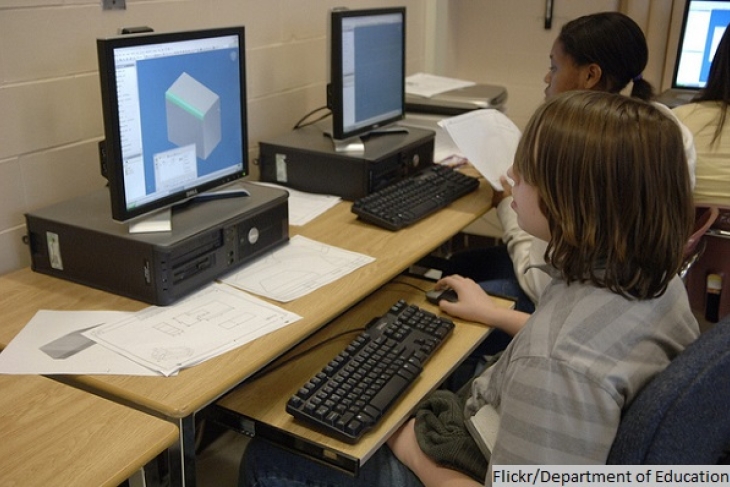Ah, spring. The much-anticipated return of baseball, blooming flowers, chirping birds, and…standardized tests.
Annual testing is now well underway in schools across the nation, and several states have already experienced major technological complications, frustrating educators and students alike and fueling increasingly vocal testing opponents.
Students taking the Alaska Measures of Progress (AMP) test, developed by the University of Kansas’s Achievement & Assessment Institute, encountered widespread Internet access issues this spring. Even after initial connectivity failures across Alaska were addressed, the state’s testing platform continued crashing, and responses submitted by many students were simply lost. In a largely rural state with limited bandwidth to begin with, the Alaska Department of Education opted to scrap computer-based testing entirely this year rather than continue to frustrate teachers and students statewide with technical disruptions.
Then, in a snafu described as “simply unacceptable” by Texas Commissioner of Education Mike Morath, many students taking the State of Texas Assessments of Academic Readiness (STAAR) ran into complications and were unable to complete their online tests last month. Responses for an additional fourteen-thousand-plus tests were also inexplicably lost due to computer hiccups. In light of these troubles, the Texas Education Agency is letting districts decide whether to re-test the thousands of affected students, issuing a statement that “for students who were not able to complete an online test because of the technology issues related to the STAAR online testing platform, districts are not required to have the students complete the test(s) and should feel under no obligation to do so.”
And in Tennessee, issues with the new Tennessee Ready (TNReady) online testing platform led the state to cancel online testing completely and resort to administering paper-based tests to students.
These certainly aren’t the results states expected when they invested millions of dollars in new testing contracts.
In an interesting contrast, testing in Partnership for Assessment of Readiness for College and Careers (PARCC) and Smarter Balanced Assessment Consortium states has been remarkably smooth. Fifteen states and the U.S. Virgin Islands are administering Smarter Balanced tests, and six states and Washington, D.C. are administering PARCC this spring. Both consortia made several adjustments and improvements to technical operations during their first year of administration and have thus far avoided any major technology issues this go around. Even in Smarter Balanced states that experienced technical issues last year (such as Nevada, North Dakota, and Montana), testing appears to be going extremely well. As Smarter Balanced Deputy Executive Director Luci Willits explains, in this second year of implementation, “There seems to be a much greater level of comfort and knowledge with test administration.”
So what’s behind PARCC and Smarter Balanced states’ success on the technology front? For one thing, as groups of states working collectively to develop tests, they are able to draw upon the expertise of educators, researchers, psychometricians, and technology experts across whole regions. Both consortia also conducted considerable pilot and field testing prior to rolling out their first operational tests last year and used those as opportunities to hone their testing interface and assessment systems (as mentioned earlier, they also made additional changes following full administration last year).
Of course, successful delivery of online tests is not the only thing that matters. Quality is king, and in Fordham’s recent evaluation of the content and quality of PARCC and Smarter Balanced, we found both to be of high quality and well aligned to the Common Core State Standards for both English language arts and mathematics (still in use in over forty states today). Both “next-generation” tests also use technology in ways that mirror real-world problems and tasks, and they include a wide variety of test question types (in addition to more traditional multiple choice items).
**
Taking tests is nerve-wracking enough even when technology cooperates. This latest spate of glitches underscores how important it is for states to take the time to adopt and administer high-quality tests (and ideally to seek external evaluations of test content and technical quality). For those concerned about the amount of time spent testing students, getting it right should be even more critical.
Rather than taking this as an opportunity to abandon computer-based tests, it's important to remember the many advantages online tests hold over the pencil-and-paper assessments of yore. These include: a more interactive (and potentially rigorous) testing experience for students, the ability to return results to families and educators more quickly, and vastly improved testing accommodations for students with disabilities and English language learners.
Nor should this latest wave of malfunctions be used as a justification for “opting out” or abandoning testing entirely. As Eva Moskowitz recently said, “Even if you opt out now, you’re not going to be able to opt out of the SAT or opt out of the Common Application for college.”
While standardized tests aren’t fun for anyone, they serve many valuable purposes. Most important, they provide critical and objective information about individual students’ progress and help prepare kids for evaluation and assessment later in life. In today’s world, familiarity and comfort with technology are also likely to greatly impact success later in life.
Though the transition to technology-based testing has been a bumpy road in some places, states should continue to draw on these experiences to improve testing for students each year. When designed and delivered well, it’s clear that these next-generation online tests represent a large improvement over shoddy state tests of the past.


